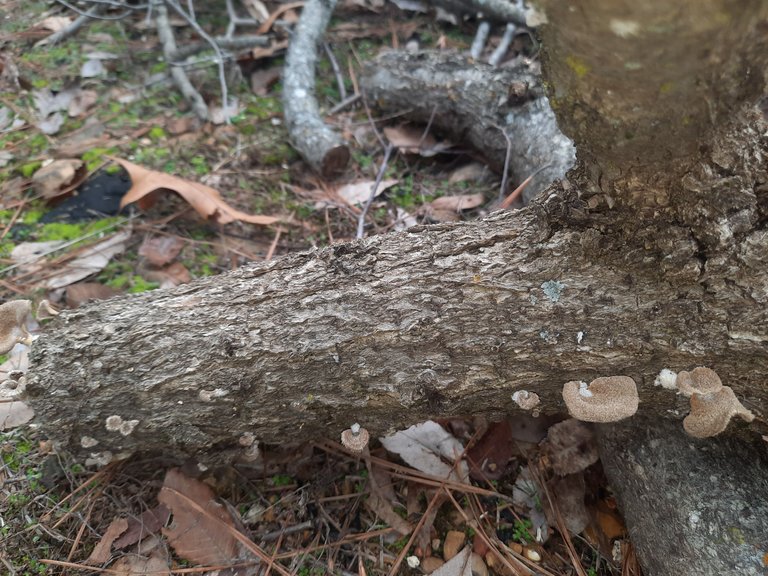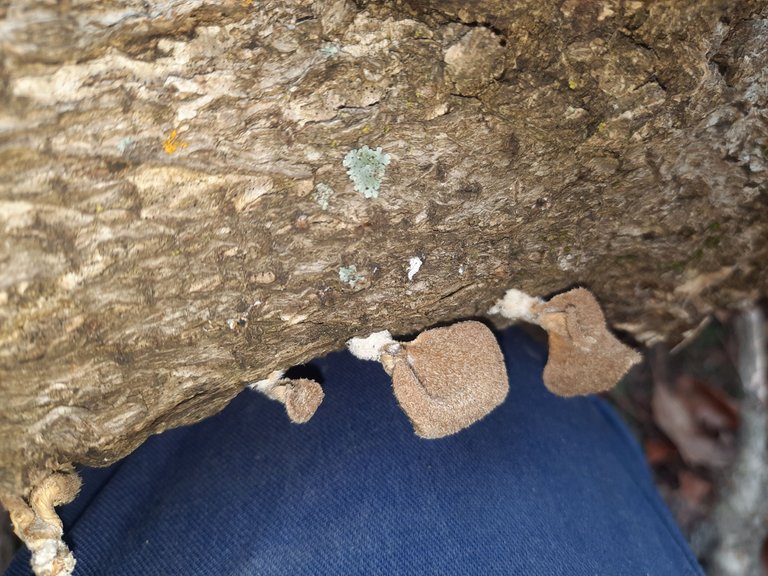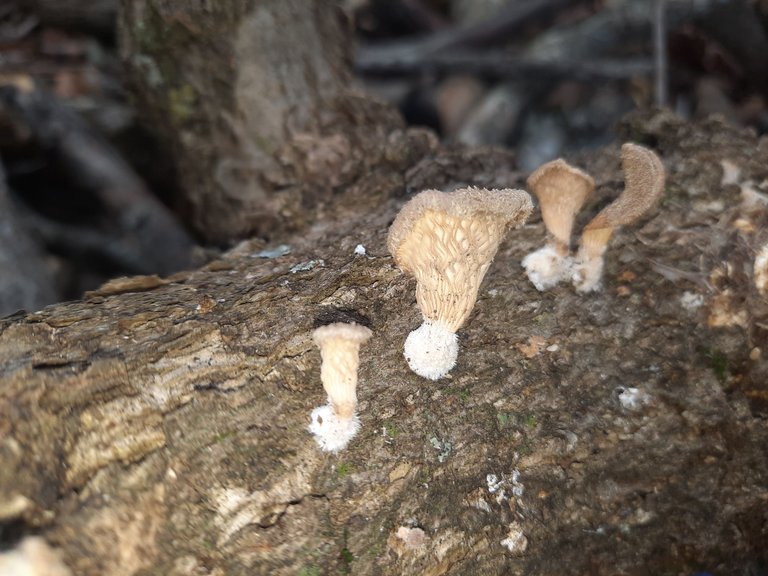I went to visit my parents recently, and while I was there, I went out to help my dad load up some firewood. There was a large tree that he had cut up and had been meaning to load up into the truck to carry to the house, so I told him I would go with him.
While we were out there, I found myself distracted by one particular log. It had a collection of rather small, fuzzy looking mushrooms on it. I thought they looked familiar, but I didn't really want to spend too much time studying them there. I was supposed to be helping out, after all. I couldn't help but remember all those times as a little kid when I was helping dad with a project but totally abandoned him because I lost focus; so when I caught myself fixating on this log, I decided to just snap a couple of pics and get back to work.
Behold, The Log

I felt like this mushroom looked familiar, and the name Panus was ringing a bell, so I did a quick search on Presearch and found it to be Panus Lecomtei, the Hairy Panus. I've seen this mushroom before growing on an old burned out stump in our pasture, but I didn't know much about it. It turns out that it is a pretty interesting species!
Panus lecomtei

When researching this particular species, my usual go-to website, mushroomexpert.com didn't have a listing for Panus lecomtei, which is what I know it by. All I could find was a page for Panus neostrigosus. After doing some digging, it appears that P. neostrigosus is the scientifically accepted name for the species, but P. lecomtei is a synonym. Common names include the hairy Panus, hairy oyster mushroom, and the ruddy panus. The word 'ruddy means "having a healthy reddish color"; a nod to the purplish hue that these mushrooms often have when they are young, though the color can vary from collection to collection. The ones that I have found are more of a tan. Regardless of the color, though, these mushrooms will always be covered in their distinctive fuzz.
P. neostrigosus is usually found on dead hardwoods where it is a saprobic feeder; meaning that it acts as a decomposer of dead matter. It's growth habit is described as pleurotoid, meaning that the stem is not centrally attached giving the mushroom a kidney or semicircular shape. These in particular look kind of like little ears (but not nearly as close as wood ear mushrooms!) Being polypores, you would expect to find little pores on the underside of the mushroom cap, but a quick glance shows the presence of...
GILLS!

This is one of those mushrooms that blurs the lines between classifications.
While P. neostrigosus is listed as inedible on some sites, others list it as "Good, but tough. Better powdered and consumed or made into tinctures". It is important to note that a mushroom being listed as "inedible" does not necessarily mean that it is poisonous; just that it doesn't particularly taste good or is too tough. In fact, studies of P. neostrigosus in peer reviewed literature indicate that this mushroom "contains a substantial amount of useful nutritional and medicinal compounds." It is high in carbs but low in fat, and it contains phenolics, β-carotene, lycopene, and it is high in antioxidants.
In Conclusion
While it might not look all that appetizing with all of its hair and wrinkly gills, perhaps you should eat a hairy Panus... just make sure you've properly identified it, first.
My contribution to #FungiFriday by @ewka
LOL Good one~
Congratulations @sustainablyyours! You have completed the following achievement on the Hive blockchain And have been rewarded with New badge(s)
Your next target is to reach 220000 upvotes.
You can view your badges on your board and compare yourself to others in the Ranking
If you no longer want to receive notifications, reply to this comment with the word
STOPCheck out our last posts: